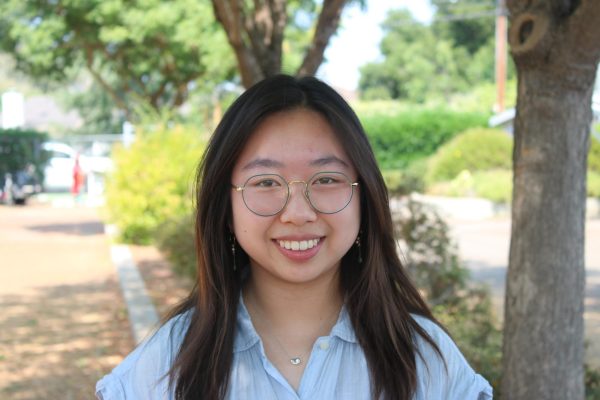Tutorial Center modernizes old system
The Tutorial Center has made many changes to its programs, hoping to increase the scope of students reached.
The Tutorial Center has been reworking the center’s functionality since the start of the school year. This includes modifying the tutor application process, sending tutors to classrooms, and expanding its virtual tutoring options.
“The pandemic and virtual [learning] kind of let us hit the reset button,” Tutorial Center coordinator Jacob Valadez said.
Since Valadez took over the role at the beginning of the COVID-19 pandemic, he’s updated the Tutorial Center’s system and the first step was streamlining the tutor applications.
Before his takeover, tutors had to fill out a lengthy application and get multiple teacher recommendations to apply. This discouraged many students from applying and as a result, most tutors were Advanced Placement or honors students.
“In the hopes of making our tutor population look more like our student population, we got rid of all that and just said anyone can be a tutor,” Valadez said. “All they have to do is come in, talk to me, and do the training. That’s it.”
Peer tutor and junior Quetzalli Hernandez describes the process as welcoming. As a part of the Advancement Via Individual Determination (AVID) program, she received tutoring in her first few years at Los Altos High School. Last year, Quetzalli was nominated as a potential peer tutor and decided to visit the Tutorial Center during her free period, and kept going back.
“I feel very grateful that I received a service, and now I’m giving it back,” Quetzalli said.
Valadez also strived to expand the reach of the Center by making it more accessible to students. A major development was sending tutors to classrooms instead of keeping them in the Tutorial Center for entire periods, including every freshman Survey Skills and AVID class.
Tutors can often function as teaching assistants, lead small groups, provide help with classwork and more.
“[We’re] reaching the students who really need the help, rather than just kind of being passive and [only] help[ing] students who ask for help,” Valadez said.
By sending tutors to a classroom, one tutor can help an entire class by working with just one student, which allows the teacher to focus on the rest of the class. With these new developments, Valadez hopes to shake off the Tutorial Center’s old image of being unapproachable and make the center a more comfortable environment.
“The worst part is probably having to sit in the Tutorial Center and having no one come in,” two-year peer tutor senior Andrew Reilly said.
Like many of his peers, he feels like the Tutorial Center is still underutilized. Regardless of the subject, the center has a tutor who has experience with the class or is willing to try. He explains that tutors are even ready to have off-topic conversations or play card games with students.
“We stress the relationship between tutors and students,” Andrew said. “And in our mind, making the student comfortable and excited is our first priority, not the schoolwork.”
With more students staying home, the center is also prioritizing online learning. It launched its virtual tutoring services at the beginning of this semester with options for 30 minute or hour-long sessions. Students can pick particular subjects, times and specific tutors to work with. From Multivariable Calculus to Film Analysis, there is an extensive selection of tutors to choose from.
Students can make appointments by signing up at this link.




